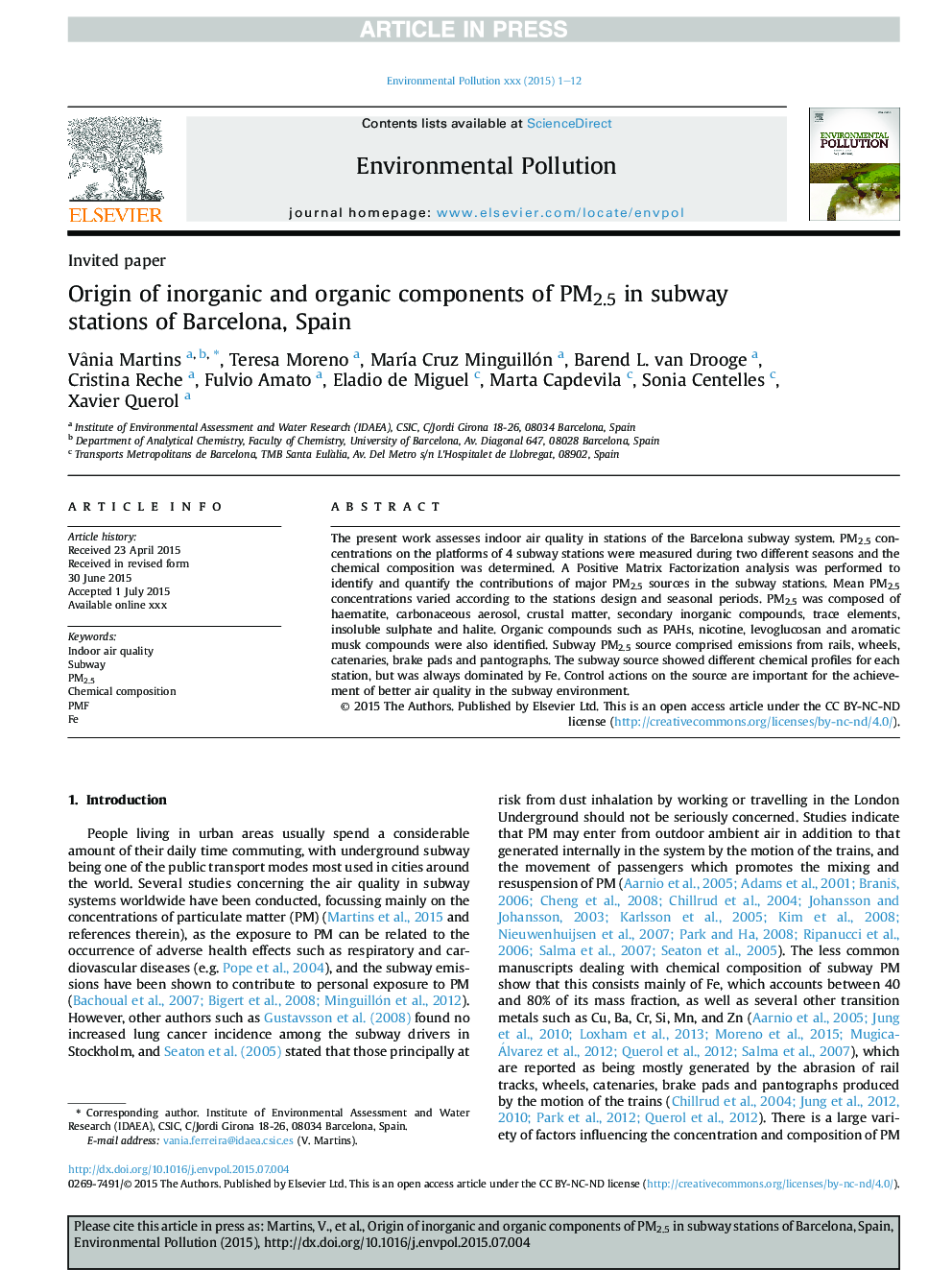| Article ID | Journal | Published Year | Pages | File Type |
|---|---|---|---|---|
| 6316569 | Environmental Pollution | 2016 | 12 Pages |
Abstract
The present work assesses indoor air quality in stations of the Barcelona subway system. PM2.5 concentrations on the platforms of 4 subway stations were measured during two different seasons and the chemical composition was determined. A Positive Matrix Factorization analysis was performed to identify and quantify the contributions of major PM2.5 sources in the subway stations. Mean PM2.5 concentrations varied according to the stations design and seasonal periods. PM2.5 was composed of haematite, carbonaceous aerosol, crustal matter, secondary inorganic compounds, trace elements, insoluble sulphate and halite. Organic compounds such as PAHs, nicotine, levoglucosan and aromatic musk compounds were also identified. Subway PM2.5 source comprised emissions from rails, wheels, catenaries, brake pads and pantographs. The subway source showed different chemical profiles for each station, but was always dominated by Fe. Control actions on the source are important for the achievement of better air quality in the subway environment.
Related Topics
Life Sciences
Environmental Science
Environmental Chemistry
Authors
Vânia Martins, Teresa Moreno, MarÃa Cruz Minguillón, Barend L. van Drooge, Cristina Reche, Fulvio Amato, Eladio de Miguel, Marta Capdevila, Sonia Centelles, Xavier Querol,
